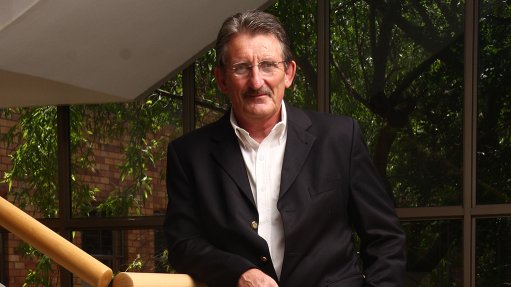
Roger Dixon
JOHANNESBURG (miningweekly.com) – Gold and platinum mines in South Africa exemplify the Albert Einstein quote on insanity, consulting engineer and industry expert Roger Dixon noted at an African Mining Network event on Thursday evening.
He explained that the typical South African mine had to contend with increasing depths, increased temperatures, reduced extraction rates and increasing travel times and yet neither the mining methodologies nor the organisational structures had changed.
Moreover, the mines had remained stubbornly obsolete despite the persistent downward trend in production, particularly gold production, since 1999.
Dixon recalled instances of walking with machine operators for more than two hours before arriving at their drills. “Two hours one way, two hours back and the shift is eight hours . . . it doesn’t take a genius to figure out what happens to production.”
He also pointed out that, on average, 10% of the staff complement was absent at any given time, which, when factored in with traveling time, and the general decline in production, was “a recipe for disaster”.
Dixon stated that the Mining Charter had successfully repelled investment and that it, combined with a 523% increase in electricity costs for mining companies in recent years and underinvestment in mining research, meant that, “particularly with gold mines . . . [companies should] please turn the lights off when you leave”.
He added that, “there’s got to be a realisation by all stakeholders that if they don’t take concerted action together . . . we’re looking at a million-plus jobs going down the tubes”.
Dixon framed all of this in a presentation on mechanisation, leveraging his experience in deep level mining to set out the requirements for implementing a successful mechanised operation in Southern Africa.
Dixon stressed the importance of having a vision. A 20-year strategic vision that considers the life of mine, the expected production, the future workforce, where the workers will come from, what skills they will have, what the company will look like and how it will function, is needed.
“Mechanisation is orebody dependent. The machines involved don’t like inclination greater than 9°,” he added, noting that successful mechanisation drives included the redesign of infrastructure, multilevel buy-in and support and the right team.
Systems also had to be adaptable and practical and incentives effective, he suggested.
Dixon cited four mechanisation projects that have had varying degrees of success.
He noted that the programme implemented by Johannesburg Consolidated Investments (JCI) in the late 1980s ultimately had limited success because, while JCI had adapted the existing infrastructure – which Dixon said was not ideal as a full redesign was preferred – there had been no organisational restructuring, and “in essence, they picked the wrong team”.
With Anglovaal in the 1990s, which Dixon worked on, he noted that the team had observed best practice and travelled the world looking at mechanised mines in Canada, Ireland and Australia. It redesigned the infrastructure and changed the organisational structure to centre around the drill rig operator, doing away with the seven supervisory levels of the traditional mine.
Further, the company applied the “right” incentives, with Dixon pointing out that, once the mine went into production, the incentive scheme changed to one based on the amount of gold produced.
In this case, he said, the challenge was around buy-in, commenting that it had been difficult to change peoples’ mindsets. He added that the average worker had not been the least bit interested in the purported benefits of mechanisation.
At Lonmin in the early 2000s, Brad Mills had tried to implement his vision, going so far as to partner with an original-equipment manufacturer and spending millions on research, and Dixon believes that he could have been successful, if he had had alignment within the organisation, particularly with the board of directors.
Dixon cited an article which scathingly described Lonmin’s venture into mechanisation as a project “in defiance of geological reality”, but affirmed his view that Mills’ idea was sound, but lacked support from a board that may have balked at the costs involved.
He said the best example of mechanised mining in Southern Africa today was Zimplats – Impala Platinum’s subsidiary in Zimbabwe.
He noted that Zimplats ticked all the boxes and, moreover, the team had taken note of the failure at BHP’s Hartley operation and had learned from it.
He concluded that the “jury’s still out” on whether modernisation and mechanisation could actually revitalise the local industry, but, at the very least, precious metals miners might stop typifying Einstein quotes.